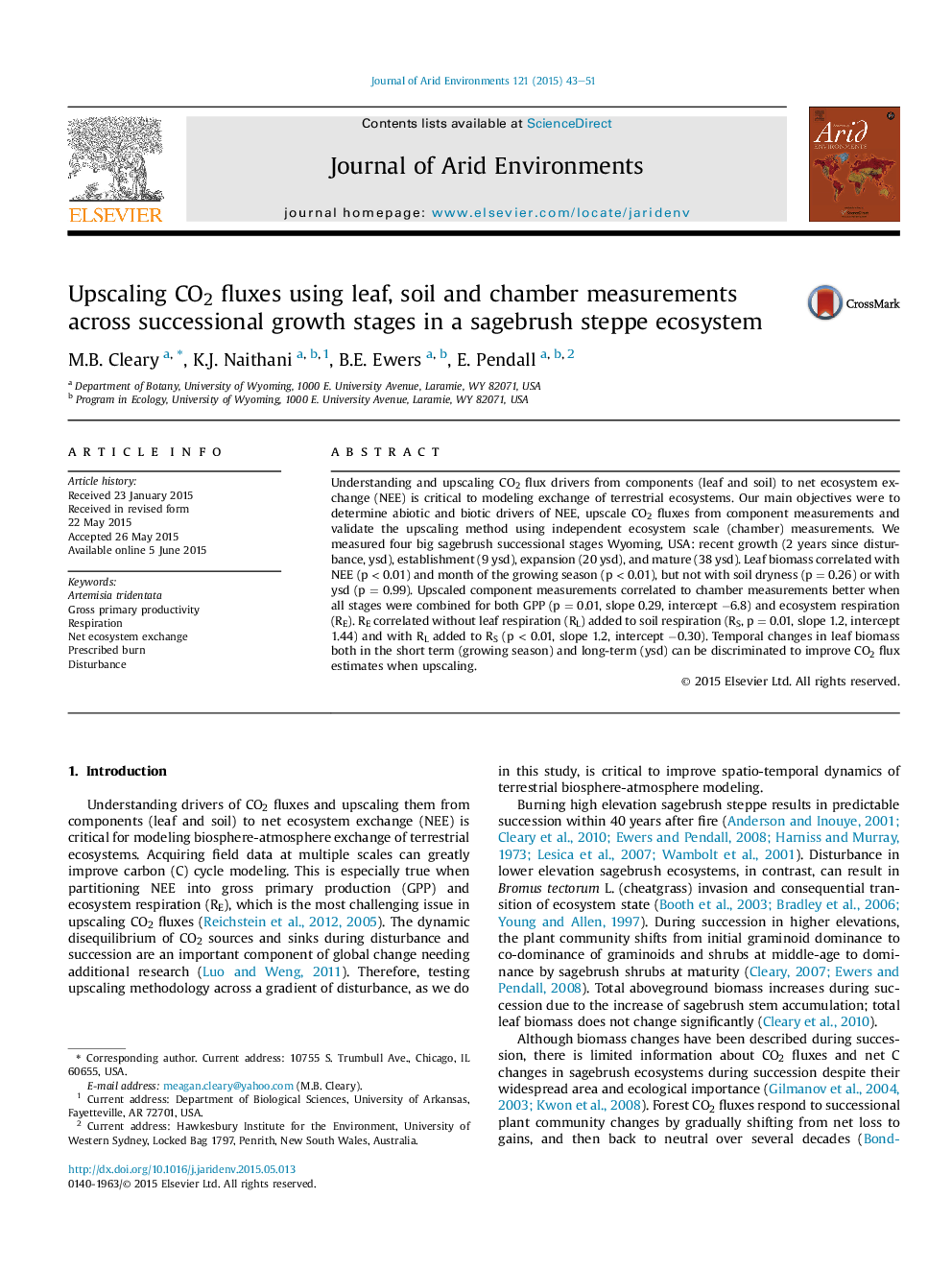| Article ID | Journal | Published Year | Pages | File Type |
|---|---|---|---|---|
| 6303195 | Journal of Arid Environments | 2015 | 9 Pages |
â¢We measured carbon fluxes at four stages after disturbance in big sagebrush steppe.â¢Plant phenology drove seasonal fluxes more predictably than abiotic measurements.â¢We scaled leaf and soil fluxes to whole ecosystem chamber fluxes to compare methods.â¢Leaf respiration improved relationships between component and whole-ecosystem fluxes.
Understanding and upscaling CO2 flux drivers from components (leaf and soil) to net ecosystem exchange (NEE) is critical to modeling exchange of terrestrial ecosystems. Our main objectives were to determine abiotic and biotic drivers of NEE, upscale CO2 fluxes from component measurements and validate the upscaling method using independent ecosystem scale (chamber) measurements. We measured four big sagebrush successional stages Wyoming, USA: recent growth (2 years since disturbance, ysd), establishment (9 ysd), expansion (20 ysd), and mature (38 ysd). Leaf biomass correlated with NEE (p < 0.01) and month of the growing season (p < 0.01), but not with soil dryness (p = 0.26) or with ysd (p = 0.99). Upscaled component measurements correlated to chamber measurements better when all stages were combined for both GPP (p = 0.01, slope 0.29, intercept â6.8) and ecosystem respiration (RE). RE correlated without leaf respiration (RL) added to soil respiration (RS, p = 0.01, slope 1.2, intercept 1.44) and with RL added to RS (p < 0.01, slope 1.2, intercept â0.30). Temporal changes in leaf biomass both in the short term (growing season) and long-term (ysd) can be discriminated to improve CO2 flux estimates when upscaling.
